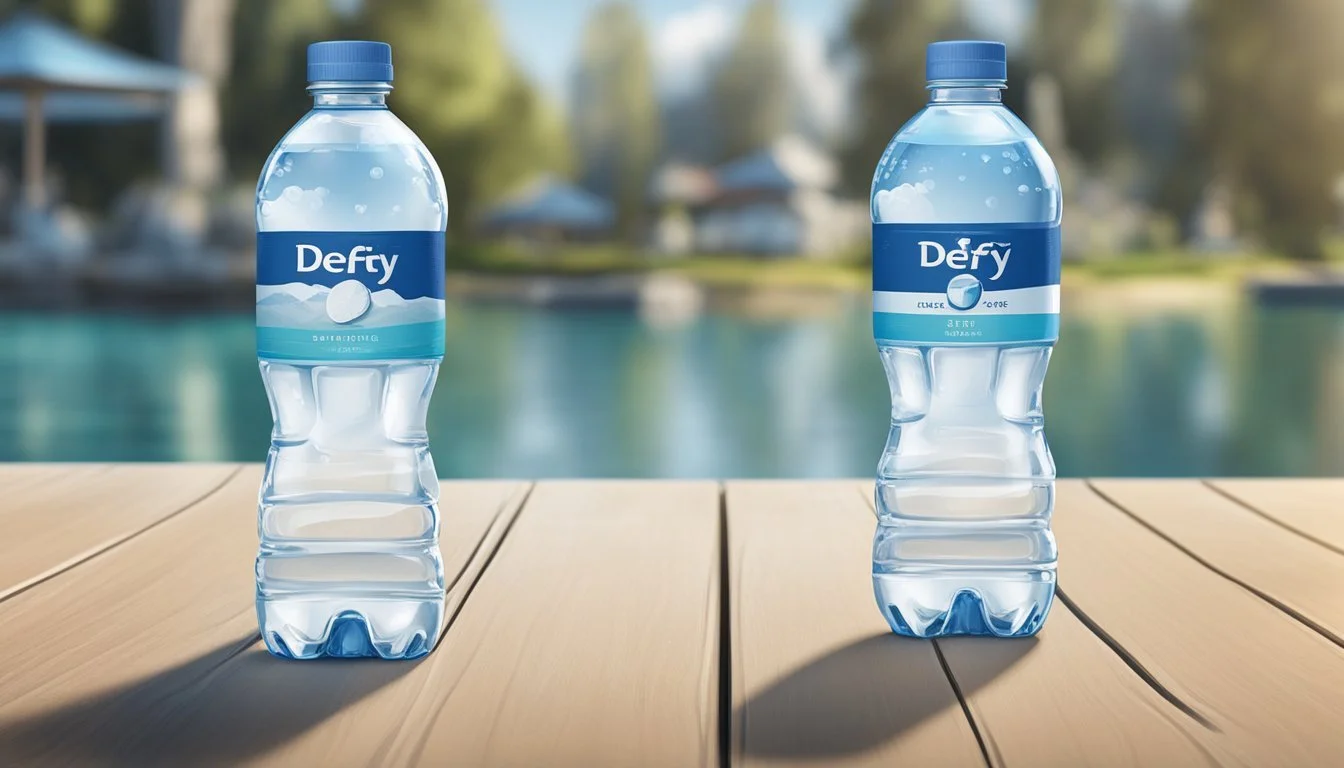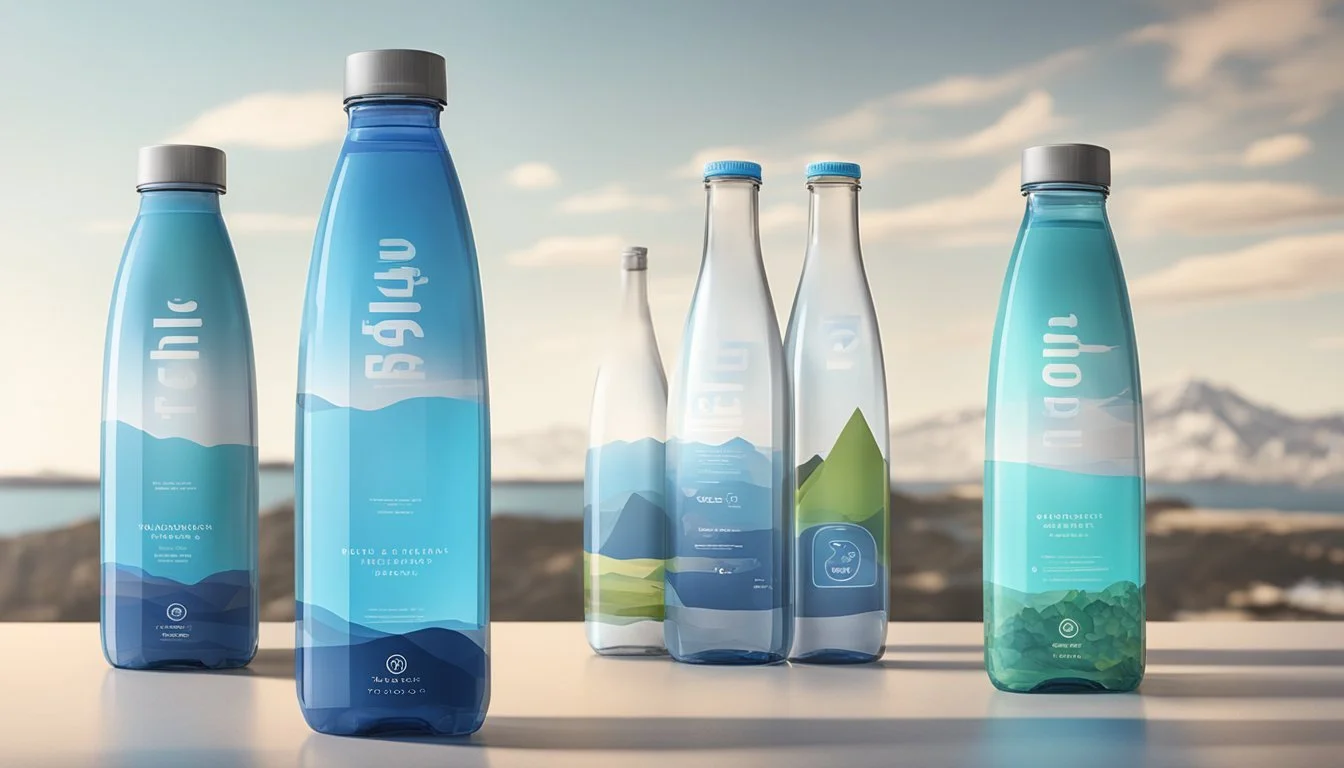Tahoe vs. Defy
Which Bottled Water is Better?
Choosing the right bottled water can make a significant difference in taste, hydration, and overall satisfaction. When comparing Tahoe and Defy, many find Tahoe to provide a crisper, more refreshing experience. Sourced from pristine environments, Tahoe boasts a purity that resonates with consumers seeking an unadulterated taste.
Defy, on the other hand, markets itself as a premium option with enhanced electrolytes and minerals designed to boost performance and recovery. For those leading an active lifestyle, Defy presents a compelling case with its added health benefits.
The decision between Tahoe and Defy often comes down to personal preference and lifestyle needs. Readers looking for a straightforward, natural water experience might lean towards Tahoe, while those needing a functional beverage with added benefits may prefer Defy.
Conceptual Understanding of Bottled Water
Bottled water varies greatly depending on its types and sources, and ensuring its quality and safety involves following strict regulations set by authoritative bodies.
Defining Bottled Water: Types and Sources
Bottled water comes in several types, each defined by its source and treatment method:
Spring Water: Sourced from natural springs, known for its natural mineral content.
Purified Water: Undergoes processes like distillation or reverse osmosis to remove contaminants.
Mineral Water: Contains naturally occurring minerals from the source.
Sparkling Water: Infused with carbon dioxide gas under pressure for effervescence.
Alkaline Water: Enhanced to have a higher pH level with minerals like calcium and magnesium.
Sources include groundwater and natural springs, chosen for their mineral content and cleanliness.
The Significance of Water Quality and Safety Regulations
Water quality and safety are critical and are regulated by various agencies:
Environmental Protection Agency (EPA): Regulates tap water quality, setting standards to protect against contaminants.
Food and Drug Administration (FDA): Oversees the safety and labeling of bottled water to ensure it meets similar safety standards as tap water.
Safety Measures: Both bottled and tap water must adhere to specific quality standards to prevent contamination with harmful substances.
These agencies ensure that both bottled and tap water are safe for consumption and meet all necessary health guidelines.
Comparative Analysis of Tahoe and Defy
Examining the characteristics of Tahoe and Defy bottled water reveals key differences in origin, taste, pH levels, and packaging. Both brands offer distinct benefits and appeal to unique consumer preferences.
Origin and Source: Tahoe vs. Defy
Tahoe sources its water from a pristine artesian aquifer in the Sierra Nevada Mountains. This natural source is known for its high mineral content and purity, extracted in small batches to maintain its quality.
Defy, on the other hand, positions itself in the alkaline water segment and sources its water from select springs. The brand emphasizes a carefully balanced mineral composition to achieve its specific pH level, appealing to health-conscious consumers.
Taste Profile: Analyzing the Differences
The taste of Tahoe water is often described as crisper and cleaner. Its natural mineral composition, including naturally occurring minerals, adds a subtle flavor that many find refreshing.
Defy offers a smoother taste attributable to its alkaline properties. This results in a slightly different mouthfeel, which some people prefer for its smoothness and less metallic taste. This makes Defy a favored choice among those pursuing a specific hydration experience.
A Look at pH Levels and Health Implications
Tahoe water boasts a naturally high pH level due to its source, typically ranging around 8.0. This makes it slightly alkaline and potentially beneficial for neutralizing acid in the body.
Defy typically has a pH level around 9.5, categorizing it as highly alkaline water. High pH levels are often marketed to alleviate acid reflux, aid hydration, and promote overall wellness. Consumers who seek alkaline water for its purported health benefits may prefer Defy.
Packaging and Environmental Concerns
Tahoe uses both plastic and glass bottles for its packaging, focusing on sustainable practices. Glass bottles are more environmentally friendly as they are recyclable and have a lower environmental impact compared to plastic.
Defy frequently opts for BPA-free plastic bottles, emphasizing recyclability and reduced plastic waste. However, plastic packaging still poses environmental concerns. For eco-conscious consumers, the choice between the two brands may hinge on the packaging material's environmental impact.
By comparing these aspects, consumers can make a well-informed decision on which brand better aligns with their hydration needs and environmental values.
Assessing Water Purity and Hydration
When comparing Tahoe and Defy bottled waters, it is crucial to evaluate their purity and hydration characteristics. Important factors include the presence of electrolytes and minerals, as well as the purification processes used.
Electrolytes and Mineral Enrichment
Electrolytes such as calcium, magnesium, potassium, and sodium play a vital role in hydration. Tahoe water boasts a balanced electrolyte profile, aiding in maintaining body functions. Calcium supports bone health, while magnesium is essential for muscle function.
Defy water emphasizes its higher magnesium content, which can benefit muscle recovery and relaxation. Potassium helps regulate fluid balance, and sodium is important for nerve and muscle function. Defy’s formula includes these minerals, enhancing its hydrating properties.
Both brands offer mineral-enriched options. Proper mineral balance can improve hydration efficacy, making it essential to choose water with the right nutrient content for individual needs.
The Role of Purification Processes
Purity in bottled water is crucial to ensure safety and quality. Tahoe employs sophisticated purification processes such as reverse osmosis and ultraviolet light treatment. Reverse osmosis removes contaminants by forcing water through a semi-permeable membrane, while ultraviolet light effectively eliminates bacteria and viruses.
Defy also adopts advanced purification methods. Among its techniques, Hydro-7 is notable for its multi-stage filtration process, which removes impurities and adds a layer of protection. This technique ensures clean, pure water, free from harmful substances.
Understanding these processes helps consumers make informed choices about the bottled water they consume, ensuring both safety and optimum hydration.
Comparing Costs and Consumer Choices
Choosing between Tahoe and Defy bottled water involves assessing both their costs and how consumers perceive these brands. Each option presents different economic considerations and affordability levels.
Economic Considerations of Bottled vs. Tap Water
Bottled water, whether Tahoe or Defy, generally comes at a higher cost compared to tap water. Consumers often pay not just for the water but also for the packaging, branding, and convenience. For instance, the price per gallon for bottled water can be significantly higher than municipal tap water, making bottled options a luxury for regular use.
Moreover, environmental considerations also play a role. The production and disposal of plastic bottles can have hidden costs for both consumers and society. The convenience of bottled water often makes it a preferred choice in scenarios where tap water is less accessible, such as road trips or during outdoor activities.
Affordability: Expensive vs. Inexpensive Options
Tahoe and Defy bottled waters are priced differently based on their sourcing, packaging, and market strategy. Tahoe, known for its crisp and clean taste, often falls into the mid-to-high price range category. This makes it a favorable choice for consumers who prioritize taste and reputation over cost.
Defy, on the other hand, may offer more budget-friendly options without compromising too much on quality. When comparing products in grocery stores, consumers will often find varying prices that reflect the brand's positioning and the consumer's willingness to spend.
Inexpensive options may appeal to a broader audience, increasing their accessibility. Conversely, more expensive bottled waters can attract a niche market that values premium quality and exclusive sourcing.
Brand Analysis and Market Presence
Tahoe and Defy are two prominent bottled water brands, each offering unique qualities and market appeal. This section examines their characteristics, market reach, and consumer preferences.
Analysing Major Water Brands
Tahoe:
Tahoe is known for its clean, crisp taste, which appeals to a wide range of consumers. Sourced from mountain springs, Tahoe emphasizes purity and natural mineral content. The brand prides itself on high quality and sustainable practices, with a focus on reducing its environmental footprint. Tahoe's packaging includes both plastic and glass bottles, catering to different consumer preferences.
Defy:
Defy stands out with its innovative approach to bottled water, offering enhanced hydration benefits. It contains essential minerals like magnesium and potassium, promoting better overall health. Defy's sleek, modern packaging appeals to health-conscious consumers. It is marketed as a premium brand, often found in upscale retail outlets and specialty stores.
Environmental and Health Concerns
The environmental impact and health risks of bottled water are critical to examine. Factors such as plastic bottle pollution and contaminants in drinking water need to be thoroughly considered.
Addressing Plastic Bottle Pollution and Alternatives
Plastic bottles significantly harm the environment. Producing, transporting, and disposing of these bottles consumes vast resources and energy. Plastic waste is a major issue as bottles often end up in landfills or oceans, taking hundreds of years to decompose. Alternatives like reusable bottles and tap water can drastically reduce this pollution.
Reusable water bottles made from materials like stainless steel or glass offer sustainable options. These bottles can be refilled countless times, cutting down on single-use plastic waste. Water filtration systems for homes can also provide safe drinking water, minimizing the need for bottled water altogether.
Health Risks Associated with Contaminants in Drinking Water
Contaminants in drinking water pose serious health risks. Bottled water companies often claim their product is purer, but it's crucial to examine it closely. Contaminants such as lead and chemicals like BPA in plastic can leach into the water, potentially causing health issues.
Lead exposure can lead to severe health problems including neurological damage, especially in children. Bottled water is regulated differently from tap water, and safety standards can vary. It's important for consumers to research and verify the safety of both tap and bottled water, ensuring access to safe drinking water free from harmful contaminants.
More About Tahoe
Mountain Valley Spring Water vs Tahoe: Which Bottled Water is Better?
Tahoe vs Richard's Rainwater: Which Bottled Water is Better?
Tahoe vs Whole Foods Italian Still Mineral water: Which Bottled Water is Better?







